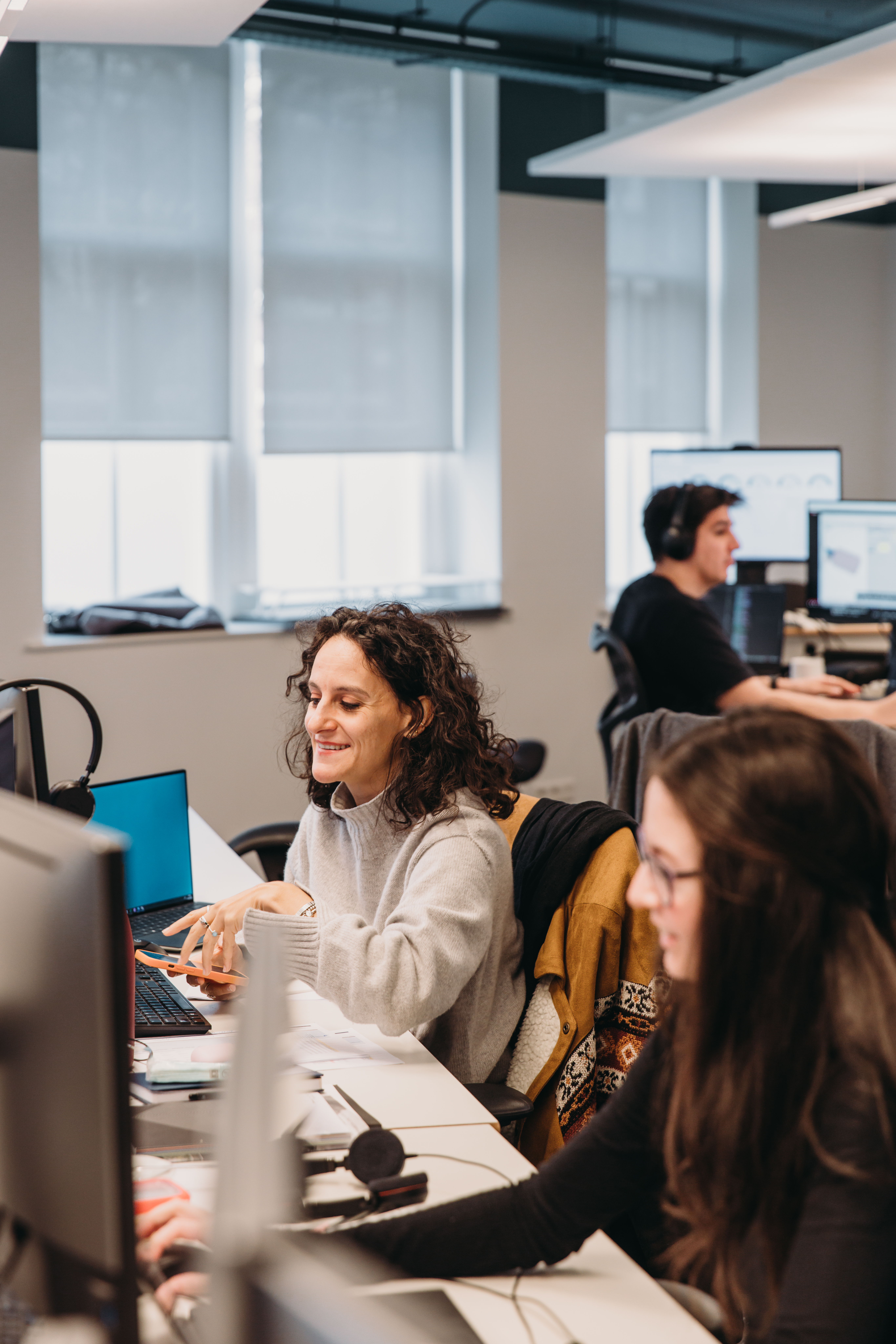News,
June 11, 2025
Designing for Brand Culture: Creating Spaces That Inspire Connection and Belonging
:format(webp))
The Office as a Cultural Catalyst
The role of the office is evolving. No longer just a place to work, it has the potential to become the beating heart of an organisation’s identity – a space that not only reflects its values but actively shapes its culture. As the boundaries between work and life continue to blur, the physical office is emerging as a cultural catalyst: a place where employees connect, collaborate, and find purpose.
This article explores how design can transform workplaces into platforms for belonging, innovation, and brand identity. From large-scale campuses to modular systems and individual workplaces, we examine how thoughtful design fosters connection and drives success. Research shows that organisations with a strong workplace culture are 48% more likely to see an increase in revenue and 80% more likely to boost employee satisfaction. The question is no longer whether the office matters, it’s how we design it to matter more.
:format(webp))
A Village of Knowledge: Connecting People, Ideas, and Innovation
A modern campus is a dynamic ecosystem where innovation and collaboration thrive. Designed as a "plug-and-play" masterplan, it integrates business hubs, labs, startups, housing, and cutting-edge technologies like quantum computing. A modular, AI-powered canopy ties these elements together, activating spaces with tailored functions – pop-up events, collaborative zones, or interactive displays – all aligned with the company’s vision.
Amenities like daycare, fitness centers, and social spaces are distributed throughout, fostering cross-disciplinary interaction. This flexible, adaptive approach creates a village of knowledge, a community built around shared purpose and innovation.
Our design for the IPAI Campus exemplifies this vision. Its AI-powered canopy connects modular labs, meeting areas, and social spaces, dynamically responding to campus activities. By fostering collaboration between researchers, businesses, and the public, it transforms the workplace into a living, breathing community of knowledge.
:format(webp))
Shaping Belonging Through Design
Belonging isn’t just a feeling; it’s a design challenge. The spaces we create have the power to foster pride and connection by reflecting the values and aspirations of the people who use them. Hospitality-inspired workplaces, for example, transform offices into welcoming hubs that feel less like corporate environments and more like vibrant communities.
In our design for the Amsterdam offices of Booking.com, one of the world’s leading holiday booking platforms, this meant creating a camous that reflects its identity as a global travel leader while fostering connection and creativity among its 6,500 employees.
Located in Amsterdam’s Oosterdokseiland, the Booking.com City Campus embodies the vibrancy of its home city. Designed around the concept of "Booking Home," the campus creates a sense of belonging for employees from over 100 nationalities. The design mirrors Amsterdam’s lively neighborhoods, with a central atrium, bridges, and staircases encouraging movement and interaction.
Throughout the building, 28 themed breakout spaces offer employees "micro-holiday destinations" for relaxation, collaboration, and dining. From the Greek Islands to the Amazon, these spaces inspire creativity and provide moments of escape, reinforcing Booking.com’s mission to connect people with the world.
The campus also integrates sustainability into its identity, with 1,500 photovoltaic panels and lush greenery earning it a BREEAM Excellent certificate. By aligning spatial design with brand strategy, the campus is more than a workplace, it’s a reflection of Booking.com’s values and its connection to Amsterdam’s dynamic spirit.
Experience-Driven Spaces: Personalisation and Flexibility
The best workplaces empower employees by offering spaces that adapt to their needs. At UNS, our product design team creates modular systems that prioritise flexibility, inclusivity, and personalisation, ensuring environments reflect both brand identity and diverse working styles.
Panorama, designed with Fantoni, is a prime example. This sustainable office furniture system features 57 modular components and three panel heights, enabling endless configurations. It allows companies to design spaces that align with their culture, break up traditional office layouts, and create engaging, functional environments.
By offering adaptable systems like Panorama, we help organizations craft workplaces that inspire connection and engagement. When employees feel their environment is designed for them, they’re more likely to thrive and contribute to the company’s mission.
:format(webp))
The Business Case for Brand Culture in Office Design
Physical space is a key value driver for top-performing offices, with companies that invest in workplace design seeing a 10-15% increase in performance drivers. Organisations with a distinctive culture see significantly better business outcomes:
48% are more likely to see an increase in revenue.
80% are more likely to see an increase in employee satisfaction.
89% are more likely to see an increase in customer satisfaction.
The importance of the office extends beyond productivity. 60% of companies prioritise enabling effective collaboration, and another 60% focus on fostering company culture, far surpassing the 20% who see productivity as a primary driver. Additionally, 92% of employees would consider leaving their job for a company with stronger branding, highlighting the office’s role in talent attraction and retention.
By aligning physical spaces with brand identity, companies can create environments that inspire pride, connection, and engagement, driving both employee satisfaction and long-term business success.
The Office as a Cultural Hub
At UNS, we believe the office has the potential to be much more than a place to work. It can be a cultural hub, a community builder, and a reflection of an organisation’s values. From large-scale campuses to modular systems and individual workplaces, design shapes culture at every level. By aligning spatial design with brand strategy, we can create environments that inspire connection, foster belonging, and drive success.
The question isn’t whether the office can shape culture, it’s how boldly we’re willing to design for it.
Curious to know more? Subscribe to our newsletter

:format(webp))
:format(webp))